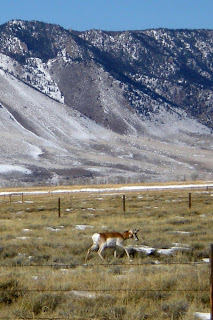Brown creepers, also called American tree creepers, are tiny little birds that blend in very well with the trees as they run up the sides. I have only seen them a few times in town, but that just may be because they are so well camouflaged!
These birds have very long, thin bills that curve downwards to allow for probing into crevasses in the bark. They are almost always seen heading up the side of a tree, balancing on their tails, then flying back down to the bottom to start all over again. I watched my two visitors perform this routine numerous times during their visit late this afternoon.
Our old friend Winsor Marrett Tyler, wrote the following in the Smithsonian Bulletin of 1948 (found on birdsbybent.com): "The brown creeper, as he hitches along the bole of a tree, looks like a fragment of detached bark that is defying the law of gravitation by moving upward over the trunk, and as he flies off to another tree he resembles a little dry leaf blown about by the wind. As he climbs up the tree, he is feeding, picking up tiny bits of food that he finds half-hidden in the crevices of bark along his path. In his search he does not work like the woodpeckers, those skilled mechanics whose work requires the use of carpenter's tools, the drill and chisel. The creeper's success depends on painstaking scrutiny, thoroughness, and almost, it seems conscientiousness. Edmund Selous (1901), speaking of the European tree-creeper, a bird close to ours in habit, uses the exact word to show us the creeper at work. 'His head,' he says, 'which is as the sentient handle to a very delicate instrument, is moved with such science, such dentistry, that one feels and appreciates each turn of it.'"
Czech: šoupálek americký
German:
Andenbaumläufer
Danish:
Amerikansk Træløber
Spanish:
Agateador Americano
Finnish:
amerikanpuukiipijä
French:
Grimpereau brun
Italian:
Rampichino americano
Japanese:
amerikakibashiri
Japanese:
アメリカキバシリ
Dutch:
Amerikaanse Boomkruiper
Norwegian:
Amerikatrekryper
Polish:
pelzacz amerykanski
Slovak:
kôrovník lesný
Swedish:
Amerikansk trädkrypare
Chinese:
美洲旋木雀
.jpg)
.jpg)
.jpg)
,+male,+Laramie.jpg)
,+female.JPG)
,+Anas+platyrhynchos,+couple,+Laramie.JPG)
,+flying,+Laramie.JPG)
,+Poecile+gambeli,+Vedauwoo.JPG)
,++Parus+gambeli,+Snowies.JPG)
,+Parus+gambeli,+CO.JPG)
,+Yucca+glauca,+Agate+Fossil+Beds,+NE.JPG)
,+Yucca+glauca,+Red+Mountain.JPG)
,+Yucca+glauca,+Red+Mountain+in+June.JPG)
,+Picoides+villosus,+female,+Crow+Creek+Trail.JPG)
,+Picoides+villosus,+Laramie.JPG)
,+Picoides+villosus,+Laramie+Garfield+St..JPG)
,+Streptopelia+decaocto,+Laramie+WY.jpg)
,+while+flying.JPG)

































